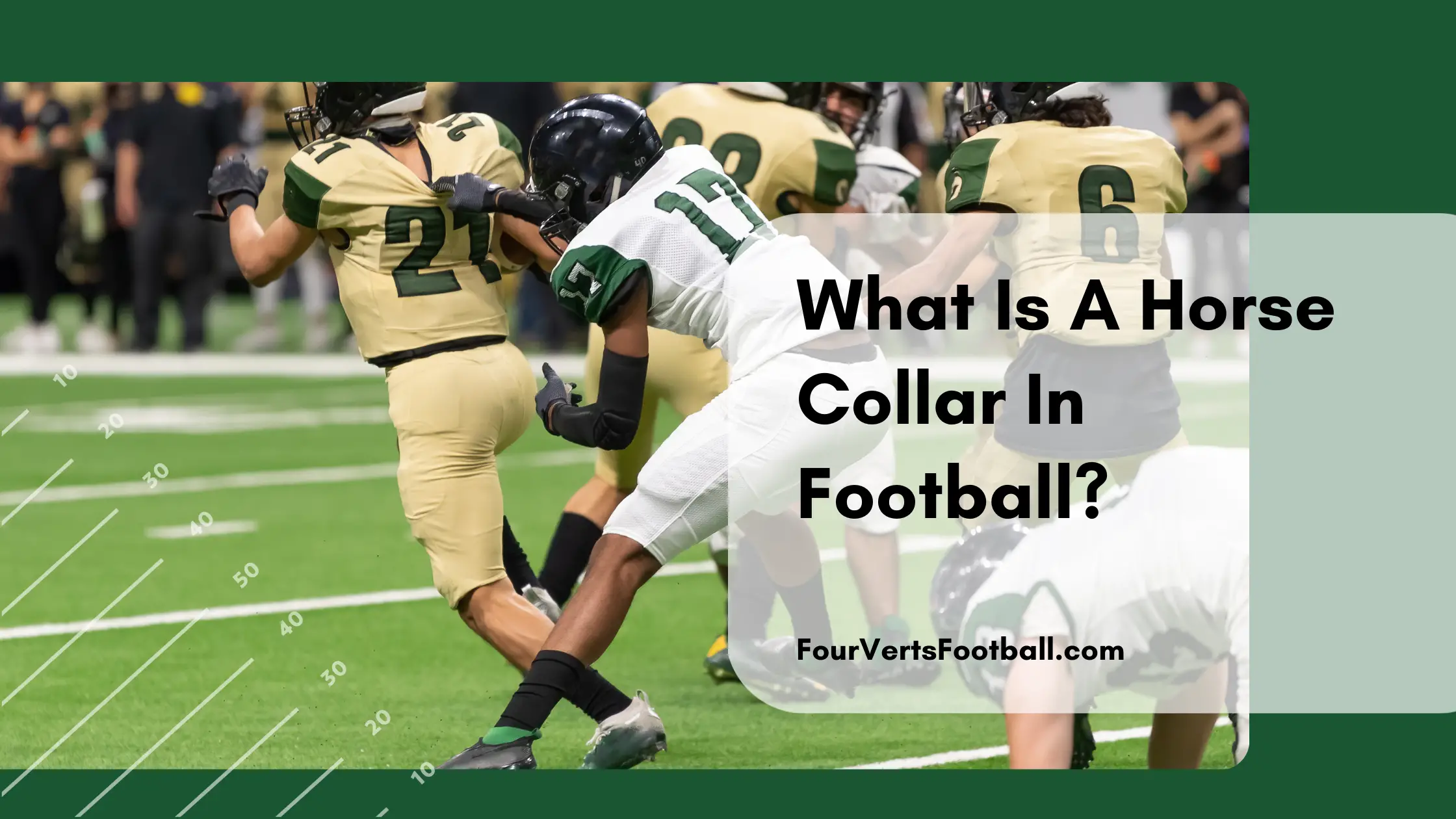A horse-collar tackle in football refers to a tackle that brings the player violently downwards by pulling on the back-inside of their shoulder pads. This tackle pulls the offensive player’s feet right from underneath him and is penalized due its tendency of injuring players .
Though it should be noted a horse-collar tackle does not apply to a player in the tackle box or a quarterback in the pocket – NFL Rulebook
This rule is more meant for players that are being chased down from behind. As opposed to those near the formation.
The horse-collar tackle was legal for many years but is now banned in high school, college, and professional levels of football.
Why is the horse collar tackle illegal?
The short answer to this question is that the horse-collar tackle causes injuries. Though the more interesting story is that this rule was actually put into place based on the actions of a single player.
In the 2004 NFL season, strong safety Roy Williams played for the Dallas Cowboys. Several times throughout the season offensive players got past Williams, he chased these players down and tackled them from behind.
Several of these tackles were horse collar tackles which were totally legal at the time. The issue is in the 2004 season alone Williams injured four separate players by bringing them down with horse collar tackles.
After the season the owners got together and voted this tackle to be illegal by a count of 27-5. For a short period of time, this was referred to as the Roy Williams rule, though this is not very common anymore.
Is a horse-collar tackle a personal foul?
Yes, a horsecollar tackle is considered a personal foul. This means the penalty will come with a fifteen-yard penalty and an automatic first down.
This is true in the NFL, NCAA, and high school football.

Is it illegal to pull hair in the NFL?
Despite the fact that horse-collar tackles are illegal in the national football league. They do not have any penalties against pulling hair.
The NFL considers hair to be another part of the jersey and bringing a player down by it is totally legal.
Why is it called horse collar?
The name horse-collar tackle comes from exactly what you are expecting. A horses collar rest on it its upper back.
It is responsible for distributing the weight of wagons across it’s neck and shoulders. The collar is where the wagon pulls back on the horse’s neck as he moves forward.
It is this similar motion of pulling on the back of the neck that earned the tackle its name.
Which Players Tend To Get Horse Collared?
Now that you have learned what a horse collar is in football you may be wondering how these players end up getting tackled this way. The two positions that are most often tackled in this manner are wide receiver and running back.
Running Back
Running back is one of the positions that is most likely to get horse collared in football. In order to get horse collared you need to be running in front of your opponent with them chasing from behind.
Since the running back receives the ball with all the defenders in front of him he is going to have to have to run past a large portion of these defenders. With each of them chasing him from behind the likely hood of a horse-collar tackle is higher.
Additionally, running backs tend to be one of the shorter players on a football team. With defensive lineman and linebackers both being taller than the average running back it makes it more likely they will tackle a player high.
Reaching down on a running back can be difficult as a defensive player and when they are intentionally lowering their body. Oftentimes defensive players will be reaching for any part of the running back and accidentally grabbing them by the collar.
Wide Receiver
The wide receiver position is another that often is on the receiving end of a horse-collar tackle. One reason that this position is often tackled this way is due to their proximity to the sideline.
If you watch horse-collar tackles you will notice a large number of them occur right on the sideline. It seems that this method of tackling is much more likely to occur if the defender is chasing the ball carrier in a straight line.
As receivers run down the sideline their closest defender will usually be chasing them directly from behind. Since wide receivers line up so close to the sideline the likelihood that these players are going to run near the sideline is quite high.
As the receivers end up in these situations several times a game the likelihood they are tackled this way is higher.
That is all on horse collar tackles in football to learn about other penalties see delay of game penalty or our breakdown of the twelve men in the huddle penalty.

